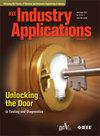管理不断增长的联网电动汽车车队的好处和弱点
IF 4.2
2区 工程技术
Q2 ENGINEERING, ELECTRICAL & ELECTRONIC
引用次数: 0
摘要
随着电动汽车(EV)在美国越来越受欢迎,电动汽车在该国电力需求中所占的比例正在迅速增长。这种需求引发了许多关于电力部门如何最好地管理电动汽车的问题。一种常用的电力治理策略是聚合,它允许中介机构管理电动汽车所有者和公用事业公司之间的电力流动。研究聚合尤其具有吸引力,因为潮流管理可以为电网提供关键的好处,例如提高可靠性、降低排放和降低电力成本。然而,尽管聚合技术有诸多优点,但它也存在局限性,比如电池性能下降、反弹峰值、交通管理的不确定性以及网络安全漏洞。特别是,随着物联网(IoT)的发展,网络安全漏洞是一个重要的新兴问题。这篇综述强调了EV聚合的广泛漏洞以及它的好处,以提供关于如何最好地平衡期望和实际性能的整体概述。调查发现,电网可靠性和电力成本是所有利益相关者群体的优先考虑因素,而其他因素,如反弹峰值,在不同群体中的重要性差异很大。这些见解可以为如何处理数据、支持气候目标和提高公平性提供政策建议。这些建议将有助于最好地促进电动汽车聚合与物联网生态系统的整合。本文章由计算机程序翻译,如有差异,请以英文原文为准。
Benefits and Vulnerabilities of Managing a Growing Fleet of Networked Electric Vehicles
As the adoption of electric vehicles (EV) becomes more popular within the United States, EVs are a rapidly growing portion of the country's electricity demand. This demand raises many questions about how the power sector can best manage EVs. One commonly investigated strategy for power governance is aggregation, which allows for an intermediary to manage electricity flow between EV owners and utilities. Studying aggregation is particularly attractive due to the key benefits that power flow management can provide to the grid, such as enhancing reliability, lowering emissions, and reducing electricity costs. However, despite aggregation's benefits, it is not without its limitations, namely battery degradation, rebound peaks, uncertainties surrounding traffic management, and cybersecurity vulnerabilities. Cybersecurity vulnerabilities, in particular, are an important emergent interest as the Internet of Things (IoT) expands. This review highlights the broad vulnerabilities of EV aggregation alongside its benefits to provide a holistic overview regarding how to best balance expectations with realistic performance. Investigation finds that grid reliability and electricity cost are a priority across all stakeholder groups while other factors, such as rebound peak, are of highly variable importance across groups. These insights can inform provide policy recommendations regarding how to handle data, support climate goals, and improve equity. These recommendations will help to best facilitate the integration of EV aggregation into the IoT ecosystem.
求助全文
通过发布文献求助,成功后即可免费获取论文全文。
去求助
来源期刊

IEEE Transactions on Industry Applications
工程技术-工程:电子与电气
CiteScore
9.90
自引率
9.10%
发文量
747
审稿时长
3.3 months
期刊介绍:
The scope of the IEEE Transactions on Industry Applications includes all scope items of the IEEE Industry Applications Society, that is, the advancement of the theory and practice of electrical and electronic engineering in the development, design, manufacture, and application of electrical systems, apparatus, devices, and controls to the processes and equipment of industry and commerce; the promotion of safe, reliable, and economic installations; industry leadership in energy conservation and environmental, health, and safety issues; the creation of voluntary engineering standards and recommended practices; and the professional development of its membership.
 求助内容:
求助内容: 应助结果提醒方式:
应助结果提醒方式:


